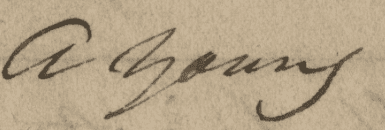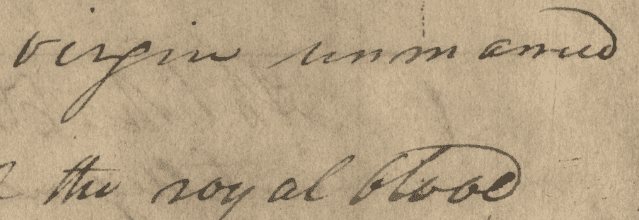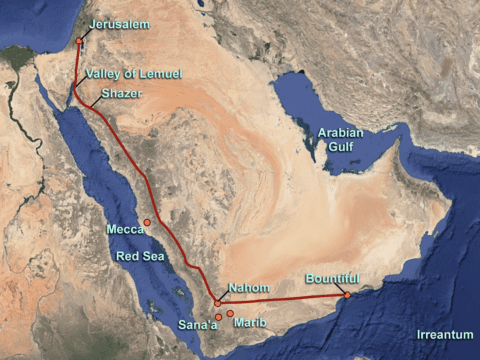Update, May 3, 2019, and more on May 8, 2019: In yet another frustrating turn as I explore the convoluted issues of the Book of Abraham, I need to add another big question mark over a post I wrote. In this case, I am now not so sure about a published statement from John Gee regarding the influence of Joshua Seixas on the spelling of names found in the Kirtland Egyptian Papers. I’ve looked over Seixas’ 1830 book on Hebrew grammar at Archive.org and his later edition, available at Google Books, and just don’t see a system where long vowels are followed by an “h.” There still may be a connection to Seixas, but I don’t see the evidence and am waiting for more insight from others whom I’ve queried on this matter. There may have been a widespread change at some point in time in how early LDS leaders spelled the names associated with their Egyptian studies, but I’m not sure how it connects to Seixas. On the other hand, transliterations of Hebrew do tend to have many words with “eh” and “ah,” somewhat similar to the KEP, so there could be a link.
I’ve wondered what other resources the early saints may have used. Since Joshua Seixas was a Sephardic Jew and would have favored a Sephardic transliteration system, it may be useful to look at examples of Sephardic transliteration such as the explicitly Sephardic transliteration in My Siddur: A Chabad Hebrew School Prayerbook by Rabbi Chayim B. Alevsky at TorahTools.com. Page 8, for instance, has examples like “Meh•lech hao•lahm” and in one sentence, “mo•deh … Meh•lech … v’ka•yahm .. sheh•heh•che•zar•ta.” We see “h” frequently following “a” and “e,” and less frequently following “o” and “u,” akin to my impressions of the KEP where I think “ah” and “eh” dominate with some uses of “oh” and I don’t think any cases of “uh” or “ih.” But that may not mean anything. Matthew Grey mentions some possibilities in his chapter, “‘The Word of the Lord in the Original,’” in Approaching Antiquity (also listen to the podcast, “Sephardic Hebrew in the Book of Abraham,” where Grey is interviewed by Laura Hales on Joseph’s study of Hebrew). One possibility is the 1830 edition of A Hebrew and English Lexicon of the Old Testament (link is to the 1824 edition) of Wilhelm Gesenius and Josiah Gibbs, but it has very little transliteration if any. The 1831 Biblia Hebraica lacks transliteration. Moses Stuart’s A Grammar of the Hebrew Language seems to have a lot of h’s with words like bah-hel and ruhh-hhats.
Your input is welcome. My original post follows.
As with so many things in the mysteries and contentions around the Book of Abraham, key information is often found in easily overlooked details. There are two subtle clues of potentially great importance to the debate over Book of Abraham origins that I just noticed in the 1835 “translation” document from W.W. Phelps in which he presents about 50 Egyptian characters and a similar amount of English text. The clues are the two names, Katumin and Onitas. Of these, Katumin is more important.
Both of these names occur in the Kirtland Egyptian Papers, but with different spellings. The three Egyptian Alphabet manuscripts, A, B, and C, have Kah tou man, Kah-tou=mun, and Kah=tou=mun, respectively. And the Book of Abraham Manuscripts that allegedly show Joseph translating single characters in the left margin into large chunks of English all have Onitah as the spelling of the father of the three noble women of royal descent who were sacrificed for refusing to worship idols (Abraham 1:11). Why the difference in spelling?
Joseph Smith’s study of Hebrew, which began when Oliver Cowdery brought some Hebrew books in November 1835 (see Joseph’s Nov. 20, 1835 journal entry) and continued in early 1836 under the tutelage of Joshua Seixas, affected Joseph in many ways. Seixas’ translation of some portions of the Bible appear to have influenced the final form of the Book of Abraham that Joseph published as well as the spelling of a number of words. On the influence of Seixas’ excellent translation, see Michael T. Walton, “Professor Seixas, the Hebrew Bible,,and the Book of Abraham” published by Sunstone. John Gee has also pointed out that Seixas’ system of transliteration influenced spelling of many names. When I first read his argument, I was not aware of the evidence he referred to and have been waiting for more detailed analysis to be published, which I understand may happen soon. Here’s what he said in John Gee, “Joseph Smith and Ancient Egypt,” in Approaching Antiquity: Joseph Smith and the Ancient World, edited by Lincoln H. Blumell, Matthew J. Grey, and Andrew H. Hedges (Provo, UT: Religious Studies Center; Salt Lake City: Deseret Book, 2015), 427–48:
Contrary to the date provided on the Joseph Smith Papers website, the book cannot date to 1835. How do we know that? The system of transliteration that Phelps used in the book follows the transliteration system taught by Josiah Seixas beginning in January of 1836. Words with long final vowels end in an “h.” The transliteration system used before that does not have the “h” and this can be seen in the transcriptions of the same words made in October 1835. Since the book has the later system, it must date after the later system was taught and thus must date after its introduction in January 1836. Joseph Smith’s journal entries indicate that within a week of receiving Hebrew books, Joseph dropped working on Egyptian in favor of Hebrew.[77]
Vowels followed by “h” appear to be part of Seixas’ transliteration method, which would suggest that it was after Seixas and his family came to Kirtland to teach Hebrew to eager Latte-day Saints (he was impressed by the zeal of Joseph and others in their study of Hebrew) that words like Katumin would be spelled as Kah-tou-mun, or Onita(s), if the final s were dropped, would be spelled as Onitah. Since the change from Onitas to Onitah requires dropping or changing the final s, it’s unclear why Onitas was changed.
While there are a number of vowels followed by “h” in the Kirtland Egyptian Papers, I wasn’t aware of clear pre-Seixas spellings that were changed after he came, though I need to look more carefully. But the Phelps document may be a good place to start. Perhaps it was one of the documents Gee had in mind, but I’m not sure.
But if the changes in spelling in Onitas and Katumin are due to Seixas, as I suspect they are, there are a number of implications that arise, some of which may be troubling or at least troublesome. It would suggest that Phelps was working with some early Alphabet and Grammar or perhaps something from missing translation by Joseph Smith that gave us the name Katumin (and possibly was used as one of the sources for the later Alphabet and Grammar). It would suggest that there was an early Book of Abraham translation manuscript with the name Onitas (or possibly Onita). And it would suggest that Gee is correct in his criticism of the Joseph Smith Papers Project for getting the date wrong on the very important Egyptian Alphabet and Grammar. All those 1835 dates for so many documents may have missed important clues in orthography that point to an 1836. That big of an error would be rather distressing and certainly troublesome, though dating old documents accurately when they aren’t provided with dates is often quite difficult.
On the positive side, if the Egyptian Alphabet and Grammar and the “1835” Book of Abraham manuscripts with “Onitah” are all from 1836, then some of the most troubling issues in the debate over the Book of Abraham become much less important. Phelps’ “translation” of Egyptian does much more than just show that Joseph and his scribes were not so deluded as to think that one scrawl could convey a paragraph of English text. It also helps confirm that the Joseph Smith Papers Project made a serious error in assigning dates to many manuscripts, an error which has played into the hands of critics of the Book of Abraham.
This issue needs further research, either to overthrow yet another of my flawed hypotheses, or to overthrow a serious error from others regarding the Book of Abraham and the Kirtland Papers.
Update, May 6, 2019: One of the challenges of searching for names like Katumin/Kahtoumun in the Joseph Smith Papers website is not only the problem of variant spellings, but also the natural possibility of occasional errors in the transcriptions. For example, the lengthy document listed as “Grammar and Alphabet of the Egyptian Language, circa July–circa November 1835” in the handwriting of William W. Phelps and Warren Parrish has the name Kahtoumun or Kah tou mun, on page 4, but in my opinion the transcript mistakes “tou” for “ton” and thus has “Kah ton num.” Examining other examples of “on” on the same page shows that the “n” does resemble a “u,” but there is enough of a difference to tell them apart. Below is Kahtoumun/Kah tou mun followed by “son,” three cases of “tradition,” “transgrissions” [sic], and “upon,” which lets us see “u” and “n” nearly side by side. We do have “un” together in the next views of “a young,” “under,” and “unmarried.” In the latter, a line from below is also shown. Given the breaks that occur in words like “unmarried” and “royal,” among others, I don’t think we should assume that the smaller breaks in Kahtouman were intended, and perhaps it should be listed simply as Kahtouman. Just my 2 cents.
This post is part of a recent series on the Book of Abraham, inspired by a frustrating presentation from the Maxwell Institute. Here are the related posts:
- “Friendly Fire from BYU: Opening Old Book of Abraham Wounds Without the First Aid,” March 14, 2019
- “My Uninspired “Translation” of the Missing Scroll/Script from the Hauglid-Jensen Presentation,” March 19, 2019
- “Do the Kirtland Egyptian Papers Prove the Book of Abraham Was Translated from a Handful of Characters? See for Yourself!,” April 7, 2019
- “Puzzling Content in the Egyptian Alphabet and Grammar,” April 14, 2019
- “The Smoking Gun for Joseph’s Translation of the Book of Abraham, or Copied Manuscripts from an Existing Translation?,” April 14, 2019
- “My Hypothesis Overturned: What Typos May Tell Us About the Book of Abraham,” April 16, 2019
- “The Pure Language Project,” April 18, 2019
- “Did Joseph’s Scribes Think He Translated Paragraphs of Text from a Single Egyptian Character? A View from W.W. Phelps,” April 20, 2019
- “Wrong Again, In Part! How I Misunderstood the Plainly Visible Evidence on the W.W. Phelps Letter with Egyptian ‘Translation’,” April 22, 2019
- “Joseph Smith and Champollion: Could He Have Known of the Phonetic Nature of Egyptian Before He Began Translating the Book of Abraham?,” April 27, 2019
- “Digging into the Phelps ‘Translation’ of Egyptian: Textual Evidence That Phelps Recognized That Three Lines of Egyptian Yielded About Four Lines of English,” April 29, 2019
- “Two Important, Even Troubling, Clues About Dating from W.W. Phelps’ Notebook with Egyptian “Translation”,” April 29, 2019
- “Moses Stuart or Joshua Seixas? Exploring the Influence of Hebrew Study on the Grammar and Alphabet of the Egyptian Language,” May 9, 2019
- “Egyptomania and Ohio: Thoughts on a Lecture from Terryl Givens and a Questionable Statement in the Joseph Smith Papers, Vol. 4,” May 13, 2019
- “More on the Impact of Hebrew Study on the Kirtland Egyptian Papers: Hurwitz and Some Curiosities in the GAEL,” May 20, 2019
- “He Whose Name Cannot Be Spoken: Hugh Nibley,” May 27, 2019
- “More Connections Between the Kirtland Egyptian Papers and Prior Documents,” May 31, 2019
- “Update on Inspiration for W.W. Phelps’ Use of an Archaic Hebrew Letter Beth for #2 in the Egyptian Counting Document,” June 16, 2019
- “The New Hauglid and Jensen Podcast from the Maxwell Institute: A Window into the Personal Views of the Editors of the JSP Volume on the Book of Abraham,” July 1, 2019
- “The Twin Book of Abraham Manuscripts: Do They Reflect Live Translation Produced by Joseph Smith, or Were They Copied From an Existing Document?,” July 4, 2019
- “Kirtland’s Rosetta Stone? The Importance of Word Order in the ‘Egyptian’ of the Grammar and Alphabet of the Egyptian Language,” July 18, 2019
- “The Twin BOA Manuscripts: A Window into Creation of the Grammar and Alphabet of the Egyptian Language?,” July 21, 2019
- “A Few Reasons Why Hugh Nibley Is Still Relevant for Book of Abraham Scholarship,” July 25, 2019





















It would be good to see the Hebrew words and their transliterated versions that Seixas made to gain an appreciation for Seixas' method. Most (if not all) feminine Hebrew nouns end in the Hebrew letter hah which is easily transliterated to an 'h' even though the final 'h' in the Hebrew word is silent. When that noun becomes plural, the hah letter turns into a 't' and the appropriate plural suffix is added.
Based off of the transliterated words, it is not easy to see if there are multiple words joining together or if it is an inconsistent representation of a long vowel sound which appears to be the long 'a' in the quick glance that I did.
Steve
The issue is also complicated by the frequent use of "h" in some words that Joseph had already given before he saw the scrolls, including the name "Shinehah" which also occurs (with surprising plausibility) in the Book of Abraham. He had also given the name Ahman for the Son of God, which is used in various forms in the Kirtland Egyptian Papers. Other names used as code names like Ahashdah and Ozondah.
Not to mention names in the Book of Mormon like Moronihah and Nephihah.
This comment has been removed by the author.
Great blogs. I really admire your ability to think, change, and learn as new evidence comes.😊 It's he true scientific method, and is rare in these conversations! I couldn’t find where Shinehah was used before JS saw the scrolls. Could U help me?
Also–I posted this on the blog discussing paragraphs from characters, can’t find it now that I'm logged in—
Thanks for the awesome points! As I’m thinking, there are many other examples showing that JS didn’t believe in the critics. For example, in the Facsimiles, the translator seems to see only representations of names or figures, in the characters written above the hands. It's not a story, but should represent an entire BofA if JS (or the translator “we”) believed in all that comprehensiveness. Maybe they didn't bother? I'd think a fraud would find more than just names there.
And, I looked at Fac. 3 after reading your thoughts about the “0” possibly representing princess for Phelps? (among other things). It looks like there is an O character above the hand of figure 4. Maat would make a perfect princess if JS had created the GAEL, the EA JS, etc. but she is used to represent a male for this situation?
Btw, you are more patient than I with the silliness of those who don't have to hide their hate behind smiles. If we don’t dare question the pompous intellectualism of our day, we’ll never amount to much.
“Look at the manuscripts and their details. It's clear that they represent copying of an existing translation, not a translation in progress…” That summarizes the failure of the critic’s arguments. Including Vogel, Ritner, C. Smith, etc.
have a great day in Shanghai..
Thanks! You can see Shinehah from an 1833 revelation in the 1835 Doctrine & Covenants.
Section 96 • Revelation, 4 June 1833 [D&C 96]
SECTION XCVI.
A Revelation to Enoch [JS], showing the order of the city or stake of Zion, Shinehah [Kirtland], given for a sample to the saints in Kirtland, June, 1833.
Thanks Jeff,
I appreciate your work. My understanding was that, although the revelation was received in 1833, the code word “Shinehah” was added at the time of printing in August of 1835. Bro. Gee and others viewed this as evidence for an early translation, at least to Abraham 3:13.
Either way, as you know, there is sound evidence that the translation took place before the JSP manuscripts were written. We don't have that original manuscript.
I agree with what you’ve pointed out about copying and so on.
Some of Vogel’s leading evidence for his “Truth of the Book of Abraham” (as you mentioned :)) is the apparent scraping and alignment of 2 characters on the WWP/WP manuscript copy 1. For me, this pre-planned alignment (throughout, including to other incomplete sentences) is clear evidence of copying an already prepared text. But, if I remember correctly, Vogel zooms in and covers this scraping quickly (we get a much better look at Dan’s handsome and super intellectual, best thinking face 🙂 luv ya Dan), and it’s difficult to see that this character is aligned to an incomplete sentence. I believe that, later, Dan briefly mentions that this is a copy of WP manuscript 3, which, after the incomplete sentence, ends abruptly with a character but no text. When WP moved his copy over to WWP/WP 1, he also aligned characters to incomplete sentences, 2nd lines in paragraphs, etc. They are clearly not translating, and the preparation required for this organization is further evidence that they are copying from an existing manuscript, no longer extant, and which likely predates all of the JSP BofA manuscripts.
Acrostics, delineation, etc. aren't nearly as "ludicrous" as Vogel's apparent faith in Joseph dictating all this planned alignment and misalignment from his hat…I don't believe acrostics was what was happening, but, in my opinion, the JSP manuscripts being original JS translation is MUCH less likely, if not impossible : ). Have a great day.
Oh, btw, I've been searching for information on how the Louvre obtained Hor's book of the dead. If you know, please let mee know : )….long story, but important, thanks.
Oh, you may be right. Thanks for the correction, Joe. I do wish to respond to some of the ways I think Vogel misinterprets or mischaracterizes the KEP. That will probably be my next post, after I finish a big work project this week.
Shinehah was (according to Joseph's "Adamic language") the word for sun, right? And angels were "angls-men" right? Did Joseph not claim these things? And Zomar for Zion? Right? I'd love to see you dig into the Adamic language transcripts and sermons we have access to, Jeff. Very few Mormons have any idea whatsoever that Joseph taught these things.
Looking forward to learning. Thanks Jeff
anonymouse, I think you should encourage everyone to read the BofA—win win. They learn about Shinehah, and you get to spend time on something that will add value to your life �. : ) <3
"add value to your life" ? How's that?
I think Joe was making a joke.
Anon 1:50 – I know, one would think Joe was joking. As absurd and it is, if you read Joe's other posts, we can tell you wasn't joking.